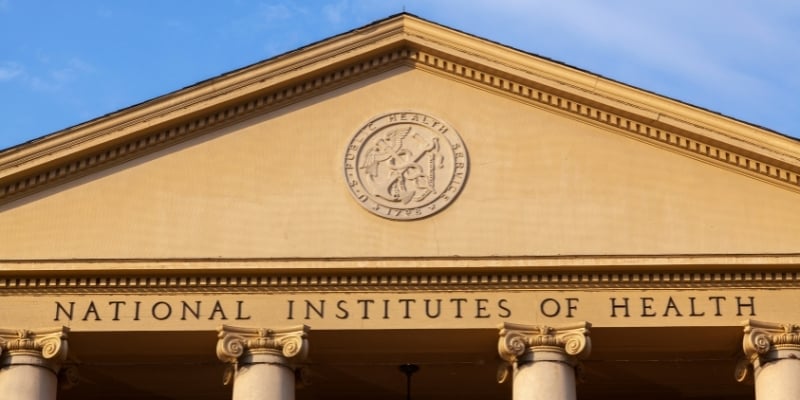Patti Valverde’s education and work credentials might lead one to believe a career in public health was inevitable. Not so.
Yes, Valverde has spent nearly three decades in the field. She earned a Master of Public Health in Maternal and Child Health from the University of North Carolina Chapel Hill in 1996. She went on to become a leading figure in training community health workers and patient navigators and a powerful advocate for improving health outcomes in vulnerable communities. She also completed a PhD in Health Services Research from Colorado School of Public Health in 2014.
It is also true that on July 1, Valverde will move on to a new career phase, as director of ColoradoSPH’s Master of Public Health program at the University of Northern Colorado (UNC) in Greeley.
An eye toward law
But Valverde never envisioned that path back in 1990 after she graduated from the University of California, Berkeley with a degree in political science. She figured a career in law was on her horizon.
“I was supposed to be a lawyer,” Valverde says. “The only reason was, I was argumentative. I knew nothing about the health field. I had no idea of what public health was.”
She did, however, have strong motivation from her immediate and extended family to use her abilities, whatever they might be, to help others.
“I had a sense that I have to make the world a better place, in my own little way,” Valverde recalls.
Unexpected inspiration
That sense sent her after graduation to Mexico, where she was looking to find somewhere to volunteer her services. That turned out to be a Jesuit-founded mission hospital in Creel, Chihuahua, that served a large population of the indigenous Tarahumara people.
“It was important to have a hospital there because the closest hospital, a public hospital, was hours away,” Valverde said.
The hospital relied in large part on money spent by tourists traveling through the scenic nearby Copper Canyon, as well as help from physicians and nurses doing a required year of volunteer service. After spending some time visiting the area, Valverde raised her hand to help.
At the time, Valverde was staying with relatives in Mexico City, so she came back to the hospital in 1991, armed with a poli sci degree that she freely admits was “no use to anyone.” Undeterred, she pitched in to help with unglamorous but essential tasks in the pediatric ward.
“I fed the babies, prepared their bottles, cleaned them and washed them and changed their diapers,” Valverde says.
A practical and cultural learning experience
Many of the infants badly needed help, she adds. They suffered from malnutrition, tuberculosis and diseases caused by unsanitary drinking water. Valverde says she learned to give them vaccines and antibiotic injections, in addition to her other work, much as a certified nursing assistant would do.
She saw some of her tiny patients die, but many more lived. As she got on-the-job medical training, she also absorbed as much of the Tarahumara’s rich culture as she could while living and working at the mission and during trips into the remote countryside to deliver public health services to families.
“I was still an observer, but I really learned a lot in that year and a half,” she says.
Goodbye, lawyering, hello, public health
The experience also taught Valverde that she didn’t want to be a lawyer, but rather a nurse. She looked into a nursing degree at San Diego State University, but decided against it because at that time it required four more years of schooling. Instead, she got a job as an outreach worker in perinatal care, assisting primarily monolingual Spanish speaking, uninsured and undocumented women obtain needed prenatal care services.
That work was formative, not only for the early experience she gained in guiding patients through an unfamiliar healthcare system, but also because her supervisor and director were Master of Public Health degree-trained, Valverde said.
“That was the first time I had ever heard of an MPH,” she noted. Her director had gotten her MPH at the University of North Carolina at Chapel Hill, which was ultimately to be Valverde’s destination. In public health, she saw a greater opportunity than in law to offer practical help to people quickly.
“In healthcare I saw the babies and the children get better,” she said. “Sometimes it took several months, but they got better and they went home to their families. That was impact.”
A move to Colorado and a new direction
After completing her MPH, Valverde got an offer from her former boss in San Diego to move to Denver. She accepted a job with Colorado Access, a Medicaid HMO, where she worked to establish staff at federally qualified health centers along the Front Range to help guide and connect patients to the healthcare services they needed. The job laid the groundwork for what became a substantial part of her life’s work.
“I built out, basically, a patient navigator program,” Valverde said. “It was a great orientation to not only indigent care but also to healthcare for Medicaid beneficiaries here in Colorado.”
The work with Colorado Access ultimately led to Valverde’s long-term commitment to training community health workers (CHWs) and patient navigators. These grassroots workers help patients connect with services, advocate for their needs, provide unbiased information, navigate them through systems of care and amplify their voices when they interact with what can be for many a daunting system.
It’s an occupation that has steadily grown since CHWs became an integral part of the public health workforce in the 1970s. The Bureau of Labor Statistics estimates that as of May 2023, there were nearly 60,000 CHWs employed in the United States in a variety of roles.
A powerful voice for patient navigation
Valverde is a longstanding leader in the research and program development that has contributed to that growth. She managed a National Cancer Institute-led trial at then Denver Health and Hospital that examined the efficacy of patient navigators in meeting the needs of underserved cancer patients, and co-authored a study of the successful results in 2010. That early experience of managing, and training patient navigators would guide her work for the next decade.
Today, Valverde is principal investigator for the national Patient Navigation & Community Health Worker Training program (PNCT), based at ColoradoSPH on the University of Colorado Anschutz Medical Campus. The program is now part of a partnership that trains “the majority” of CHWs for the state of Colorado, with funding from a $3 million grant by the federal Health Services and Research Administration, she said.
The training demand is growing with the passage last year of Colorado SB23-002, which was supported strongly by Valverde and Andrea (Andi) Dwyer, director of the Colorado Cancer Screening Program and senior professional research assistant in ColoradoSPH’s Department of Community & Behavioral Health.
The bill will allow Medicaid reimbursement for some services provided by CHWs. Those services and rates are to be submitted by the state to the Centers for Medicare and Medicaid Services by July 1 of this year. In addition, CMS payment rules for 2024 will allow reimbursement for services provided by CHWs to Medicare patients, another indication by the broad healthcare system of the growing importance of these workers.
Early influences set a career path
To Valverde, her work with CHWs and patient navigation have roots in her early – and unsuspecting – introduction to patient care and public health at the small mission hospital in northern Mexico.
“When I think about my career, I think almost all of my jobs since the early 1990s have been about outreach and navigating people to care and within health systems,” she said. “That was even before we had the term ‘navigator,’ but somehow I’ve always been drawn to these types of projects or efforts. For so much of what we need in life – healthcare, mental healthcare, etc. – we need people to guide us because the system is confusing and intimidating.”
The COVID-19 pandemic offered a vivid example of the value CHWs can add to medical care and public health, Valverde said.
“We saw throughout COVID how healthcare systems and public health departments that didn’t have relationships with community-based organizations or didn’t have CHWs struggled to get vaccines and valid information [about the virus] to vulnerable communities,” she said.
A new career phase
Valverde sees her new MPH directorship at UNC – she will also be a tenured associate professor – as both a source of new opportunities and a reinforcement of the public health career she has built. The school is working on funding for a College of Osteopathic Medicine. In addition, UNC’s Bachelor of Science in Health Sciences degree program offers a great pathway for students interested in pursuing an MPH, Valverde says.
“They have a lot of undergraduate students excited and involved in public health, so I am thrilled that I will be a part of [the MPH] team and have a leadership role,” she said. “I’m also really excited because UNC has a strong health education focus, and that really fits in with the training program that I run.”






